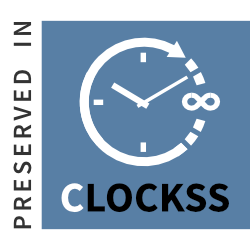Multi-Objective Residential Load Scheduling Approach Based Pelican Optimization Algorithm with Multi-Criteria Decision Making
DOI:
https://doi.org/10.31272/jeasd.2447Keywords:
Demand response, Multi-objectives optimization, Multi-Criteria Decision Making Optimization Algorithm, Smart gridAbstract
The existing energy grid faces challenges in meeting the escalating energy demands driven by annual population growth and the proliferation of energy-consuming devices in the contemporary era. This research proposes an optimum multi-objective pelican optimization method for smart grid load control. The proposed algorithm effectively explores diverse solutions by minimizing customer energy costs and reducing peak loads for utility companies, identifying a Pareto front that represents optimal trade-offs among the three objectives: energy cost minimization, peak load reduction, and a third objective (user inconvenience). An ELimination ET Choix Traduisant la REalite (ELECTRE) method then rigorously ranks the Pareto-optimal solutions, guiding the selection of the most advantageous alternative that harmonizes the competing objectives. Energy bills are reduced by more than 42.66% using the proposed method. Additionally, the reduction in peak energy consumption by 20.66% has benefited the power suppliers for a sampling time of (30 minutes). When applied (60 minutes) sampling time, energy bills are reduced to 40.74 % and peak load to 30% with acceptable levels of inconvenience. Furthermore, the proposed load management provides 42.66 % and 20.66% cost and peak savings compared to other work in the state of the arts.
References
. F. R. Albogamy et al., “Real-Time Energy Management and Load Scheduling with Renewable Energy Integration in Smart Grid,” Sustainability, vol. 14, no. 3, p. 1792, Feb. 2022, doi: https://doi.org/10.3390/su14031792.
. S. Panda et al., "Residential Demand Side Management Model, Optimization and Future Perspective: a Review," Energy Reports, vol. 8, pp. 3727–3766, Nov. 2022, doi: https://doi.org/10.1016/j.egyr.2022.02.300.
. A. Shaban, H. Maher, M. Elbayoumi, and S. Abdelhady, “A Cuckoo Load Scheduling Optimization Approach for Smart Energy Management,” Energy Reports, vol. 7, pp. 4705–4721, Nov. 2021, doi: https://doi.org/10.1016/j.egyr.2021.06.099.
. D. H. Muhsen, T. Khatib, and F. Nagi, “A Review of Photovoltaic Water Pumping System Designing methods, Control Strategies and Field Performance,” Renewable and Sustainable Energy Reviews, vol. 68, pp. 70–86, Feb. 2017, doi: https://doi.org/10.1016/j.rser.2016.09.129.
. Y. Liu, L. Xiao, G. Yao, and S. Bu, “Pricing-Based Demand Response for a Smart Home with Various Types of Household Appliances considering Customer Satisfaction,” IEEE Access, vol. 7, pp. 86463–86472, 2019, doi: https://doi.org/10.1109/access.2019.2924110.
. D. H. Muhsen, A. B. Ghazali, T. Khatib, and I. A. Abed, "Extraction of Photovoltaic Module Model's Parameters Using an Improved Hybrid Differential Evolution/electromagnetism-like Algorithm," Solar Energy, vol. 119, pp. 286–297, Sep. 2015, doi: https://doi.org/10.1016/j.solener.2015.07.008.
. M. S. Bakare, A. Abdulkarim, M. Zeeshan, and A. N. Shuaibu, "A Comprehensive Overview on Demand Side Energy Management Towards Smart Grids: challenges, solutions, and Future Direction," Energy Informatics, vol. 6, no. 1, Mar. 2023, doi: https://doi.org/10.1186/s42162-023-00262-7.
. X. M. Fan, X. H. Li, Y. M. Ding, J. He, and M. Zhao, “Demand Response Scheduling Algorithm for Smart Residential Communities considering Heterogeneous Energy Consumption,” Energy and Buildings, vol. 279, pp. 112691–112691, Nov. 2022, doi: https://doi.org/10.1016/j.enbuild.2022.112691.
. B. Saravanan, "DSM in an Area Consisting of Residential, Commercial and Industrial Load in Smart Grid," Frontiers in Energy, vol. 9, no. 2, pp. 211–216, Mar. 2015, doi: https://doi.org/10.1007/s11708-015-0351-0.
. H. M. Ridha et al., “Parameters Extraction of Three Diode Photovoltaic Models Using Boosted LSHADE Algorithm and Newton Raphson Method,” Energy, vol. 224, p. 120136, Jun. 2021, doi: https://doi.org/10.1016/j.energy.2021.120136.
. H. T. Haider, O. H. See, and W. Elmenreich, “A Review of Residential Demand Response of Smart Grid,” Renewable and Sustainable Energy Reviews, vol. 59, pp. 166–178, Jun. 2016, doi: https://doi.org/10.1016/j.rser.2016.01.016.
. Y. Ge, H. Ye, and K. A. Loparo, “Agent-Based Privacy Preserving Transactive Control for Managing Peak Power Consumption,” IEEE Transactions on Smart Grid, vol. 11, no. 6, pp. 4883–4890, Nov. 2020, doi: https://doi.org/10.1109/tsg.2020.2997314.
. A. Yousaf, R. M. Asif, M. Shakir, A. U. Rehman, and M. S. Adrees, “An Improved Residential Electricity Load Forecasting Using a Machine-Learning-Based Feature Selection Approach and a Proposed Integration Strategy,” Sustainability, vol. 13, no. 11, p. 6199, May 2021, doi: https://doi.org/10.3390/su13116199.
. S. D. Nazemi, M. A. Jafari, and E. Zaidan, “An Incentive-Based Optimization Approach for Load Scheduling Problem in Smart Building Communities,” Buildings, vol. 11, no. 6, p. 237, May 2021, doi: https://doi.org/10.3390/buildings11060237.
. J. Veras et al., “A Multi-Objective Demand Response Optimization Model for Scheduling Loads in a Home Energy Management System,” Sensors, vol. 18, no. 10, p. 3207, Sep. 2018, doi: https://doi.org/10.3390/s18103207.
. Z. Yahia and A. Pradhan, “Multi-objective Optimization of Household Appliance Scheduling Problem considering Consumer Preference and Peak Load Reduction,” Sustainable Cities and Society, vol. 55, p. 102058, Apr. 2020, doi: https://doi.org/10.1016/j.scs.2020.102058.
. S. Ayub et al., “Multi-Criteria Energy Management with Preference Induced Load Scheduling Using Grey Wolf Optimizer,” Sustainability, vol. 15, no. 2, pp. 957–957, Jan. 2023, doi: https://doi.org/10.3390/su15020957.
. A. Rahman, I. Rahman, and N. Mohammad, "Demand Side Residential Load Management System for Minimizing Energy Consumption Cost and Reducing Peak Demand in Smart Grid," In IEEE Conference: 2020 2nd International Conference on Advanced Information and Communication Technology (ICAICT) 2020, Nov. 2020, doi: https://doi.org/10.1109/icaict51780.2020.9333451.
. J. Niu, Z. Tian, J. Zhu, and L. Yue, “Implementation of a price-driven Demand Response in a Distributed Energy System with multi-energy Flexibility Measures,” Energy Conversion and Management, vol. 208, p. 112575, Mar. 2020, doi: https://doi.org/10.1016/j.enconman.2020.112575.
. E. M. Ahmed et al., “A Comprehensive Analysis of Demand Response Pricing Strategies in a Smart Grid Environment Using Particle Swarm Optimization and the Strawberry Optimization Algorithm,” Mathematics, vol. 9, no. 18, pp. 2338–2338, Sep. 2021, doi: https://doi.org/10.3390/math9182338.
. J. Wang, F. Zhang, H. Liu, J. Ding, and C. Gao, “A Novel Interruptible Load Scheduling Model Based on the Improved Chicken Swarm Optimization Algorithm,” CSEE Journal of Power and Energy Systems, vol. 7, no. 2, Jun. 2020, doi: https://doi.org/10.17775/cseejpes.2020.01150.
. A. M. Jasim, B. H. Jasim, A. Flah, V. Bolshev, and L. Mihet-Popa, “A New Optimized Demand Management System for Smart grid-based Residential Buildings Adopting Renewable and Storage Energies,” Energy Reports, vol. 9, pp. 4018–4035, Dec. 2023, doi: https://doi.org/10.1016/j.egyr.2023.03.038.
. D. H. Muhsen, H. T. Haider, Y. Al-Nidawi, and T. Khatib, “Optimal Home Energy Demand Management Based Multi-Criteria Decision Making Methods,” Electronics, vol. 8, no. 5, p. 524, May 2019, doi: https://doi.org/10.3390/electronics8050524.
. M. I. Mansoor and H. T. Haider, “A multi-objective Residential Load Management Based on self-adapting Differential Evolution,” Renewable Energy Focus, vol. 38, pp. 44–56, Sep. 2021, doi: https://doi.org/10.1016/j.ref.2021.05.004.
. Q. Xiong, J. She, and J. Xiong, “A New Pelican Optimization Algorithm for the Parameter Identification of Memristive Chaotic System,” Symmetry, vol. 15, no. 6, p. 1279, Jun. 2023, doi: https://doi.org/10.3390/sym15061279.
. P. Trojovský and M. Dehghani, “Pelican Optimization Algorithm: a Novel Nature-Inspired Algorithm for Engineering Applications,” Sensors, vol. 22, no. 3, p. 855, Jan. 2022, doi: https://doi.org/10.3390/s22030855.
. C. A. Coello Coello, S. González Brambila, J. Figueroa Gamboa, M. G. Castillo Tapia, and R. Hernández Gómez, “Evolutionary Multiobjective optimization: Open Research Areas and Some Challenges Lying Ahead,” Complex & Intelligent Systems, vol. 6, no. 2, pp. 221–236, Jun. 2019, doi: https://doi.org/10.1007/s40747-019-0113-4.
. E.-G. Talbi, Metaheuristics: from Design to Implementation. Hoboken, N.J.: John Wiley & Sons, 2009.
. A. Mohamadghasemi, A. Hadi‐Vencheh, and F. Hosseinzadeh Lotfi, “The Multiobjective Stochastic CRITIC–TOPSIS Approach for Solving the Shipboard Crane Selection Problem,” International Journal of Intelligent Systems, vol. 35, no. 10, pp. 1570–1598, Jul. 2020, doi: https://doi.org/10.1002/int.22265.
. H. Taherdoost and M. Madanchian, “A Comprehensive Overview of the ELECTRE Method in Multi Criteria Decision-Making,” Journal of Management Science and Engineering Research, vol. 6, no. 2, Jun. 2023, doi: https://doi.org/10.30564/jmser.v6i2.5637.
. J. Rong, W. Liu, F. Jiang, Y. Cheng, H. Li, and J. Peng, “Privacy-aware Optimal Load Scheduling for Energy Management System of Smart Home,” Sustainable Energy Grids and Networks, vol. 34, pp. 101039–101039, Apr. 2023, doi: https://doi.org/10.1016/j.segan.2023.101039.
Downloads
Key Dates
Received
Revised
Accepted
Published Online First
Published
Issue
Section
License
Copyright (c) 2025 Hiba Haider Taha, Haider Tarish (Author)

This work is licensed under a Creative Commons Attribution 4.0 International License.

















